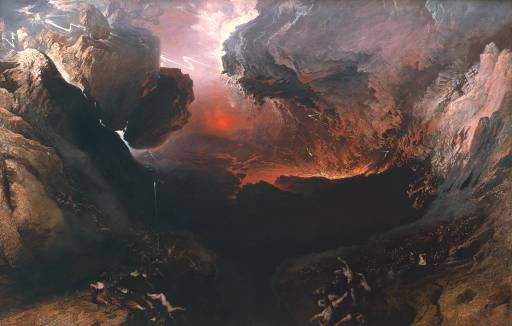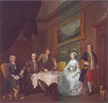
John Martin (1789–1854) was a key figure in the nineteenth-century art world, renowned for his dramatic scenes of apocalyptic destruction and biblical catastrophe. Tate Britain’s major exhibition will be the first show dedicated to his paintings for over 30 years, and the largest display of his works seen in public since 1822. Bringing together his most famous paintings from collections around the world, as well as previously unseen and newly-restored works, the exhibition will reassess this singular figure in art history, and reveal the enduring influence of his apocalyptic art on painting, cinema and popular spectacle.
John Martin: APOCALYPSE at Tate Britain will chart the rise, fall and resurrection of a unique artistic reputation. Trained as a herald-painter in the North of England, Martin went on to create some of the nineteenth-century’s most widely exhibited works of art. The exhibition will showcase some of his best known oil paintings, including Belshazzar’s Feast 1820 (on loan from a private collection and not seen in public for over 20 years) and The Great Day of His Wrath 1851-3. Such works travelled the country during his lifetime, and toured the world after his death, thrilling audiences from New York to Sydney with their painstaking detail and epic sense of scale and drama. His iconic mezzotint illustrations for The Bible and Milton’s Paradise Lost will also be on display, alongside his brilliant landscape watercolours. Martin’s profound scientific interests will be shown in his pioneering illustrations of dinosaurs, based on the latest fossil discoveries, and in his unrealised but visionary engineering projects, including plans for the embankment of the Thames and a metropolitan railway for London.
While his art was hugely popular, Martin remained something of an outsider, scorned by figures like John Ruskin and William Wordsworth and shunned by the Royal Academy. Instead, the theatrical drama and spectacle of his paintings earned him such fans as Charles Dickens, Edward Bulwer-Lytton and the Bronte sisters, as well as Prince Albert and Leopold, King of the Belgians. His decision to show works at popular venues like Piccadilly’s Egyptian Hall meant that he engaged directly with a mass market rather than an academic elite. Featuring key loans from Musée du Louvre, Paris and National Gallery of Art, Washington, this exhibition will re-evaluate how Martin’s populism fits into the story of British art, and how his work connects with the culture of today.








will endeavour to see apocolypse